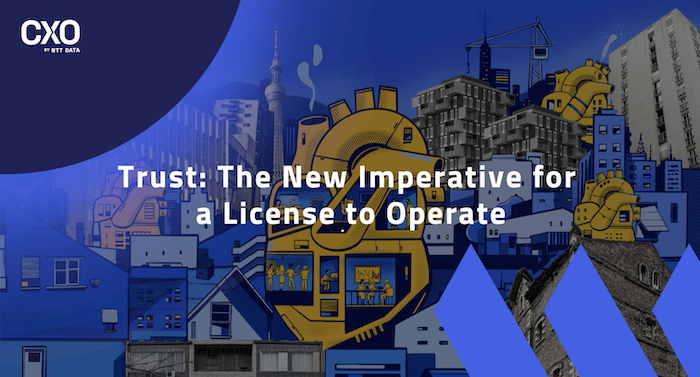
Unsplash/ Vinicius Amano
In the gap between a customer’s actual experience and the one intended or promised by a brand, lies the potential for frustration, anger and diminished loyalty. It is here that customers make the decision to leave, and where a brand’s reputation can falter. This gap has also widened over the past two years due to the limitations imposed by the pandemic – communication became digital, channels were put under pressure, customers felt isolated and service was largely reactive thanks to limited customer touchpoints and engagements.
In 2020, Gartner emphasized the importance of a proactive customer service roadmap that focused on, among other key elements, the development of human resources that have the skills required to engage with customers more in-depth. In 2022, this conversation evolved with Gartner underscoring the importance of focusing on both customers and employees to drive growth: a growth enhanced by customer-centric processes that put empathy and trust at the forefront of engagements.
Customer empathy builds trust and loyalty which, in turn, lead to improved experiences as customer service connects on a more human level.
With improved customer experiences voted as the leading indicator of strategic performance in the Global Benchmarking Report from our sister company, Dimension Data, for the eighth year in a row, recognizing the person behind the engagement has never been more important. Customer empathy builds trust and loyalty which, in turn, lead to improved experiences as customer service connects on a more human level. It’s easy to see why companies should be paying attention.
Empathy, trust and loyalty
The scale of empathy is directly connected to the scale of trust that the organization needs to foster to increase loyalty. Research has found that brands that connect effectively with customers are those that ‘engage, entice and enrich’. Empathy and trust are intricately connected, a consequence of one another.
Empathy is not just the connection made between the agent in the call center with the frustrated customer sent from pillar to post, but the connection between organizations that work with one another to provide and consume services. By creating an environment that fosters empathy within the business, the organization is creating a space within which this behavior will flourish.
Data is essential to understanding and predicting customer needs, motivations, behaviors and intentions. With this picture painted by data, contact center agents can see how to react in ways that will engender positive interactions – and build trust.
One of the prerequisites for building this empathy is to have access to customer insights. Customer data is essential to understanding and predicting customer needs, motivations, behaviors and intentions. With this picture painted by data, contact center agents can see how customers respond, what their pain points are and how to react to these in ways that will engender positive interactions – and build trust. If agents have all the information about the customer, they can leverage this to personalize experiences.
Insights from this data can also be leveraged to build and strengthen further customer connections. Voice of the Customer (VoC) is the roadmap to empathic engagements that fully understand customer feelings, while using a variety of different tools: direct engagements (surveys), indirect engagements (social listening, speech and text analytics), and inferred engagements (behavior and transactional analysis). All this data can be gathered to help better know the customer and connect with empathy.
Supporting a successful omnichannel strategy
The vast volumes of data collated from across the omnichannel journey plays a significant role in helping the organization to understand customer needs. It helps agents to unpack whether or not an interaction requires a high level of empathy, or if the customer would be better served using a self-service channel. This is an important consideration, because while digital channels can run 24×7, they need to be balanced with human interactions (in order to provide the connection and support that people really need).
To foster this empathy throughout the omnichannel strategy and the business, companies need to create genuine connections through routing logics that match the customers with agents that will more likely get along with them and make them feel understood. This is no small thing – one person’s superb contact center agent may be another person’s disconnect.
Usually, routing logics consider agent skills as technical expertise, ability to retain customers or to sell services and products. Empathy should be a skill to take into consideration as well, especially with customers who show an emotional condition that needs a higher level of empathy (i.e. angry, complaining customers). Pairings could also consider other elements, such as the same geographical location, or shared hobbies. These can foster connections that go beyond just a problem, a call and a resolution.
Another way of building strong connections is to use video. Most people have become accustomed to using it over the past two years so it offers them the ability to engage with someone face to face – something that can minimize conflict in itself – and reduces a sense of isolation and distance.
An empathic chatbot can fill the gaps in customer communication and help organizations build a richer customer connection. Empathetic or emotional AI can mirror customer emotions and knows when it’s time to hand a person over to a human agent.
For companies that want to add even more heft to their empathic engagement roster, there is now the option to add in chatbots that have empathy built in. These virtual assistants are often considered the least empathic of all digital touchpoints, but the next generation can process and react to human emotions. As research has found, an empathic chatbot can fill the gaps in customer communication and help organizations build a richer customer connection. Empathetic or emotional AI can mirror customer emotions and knows when it’s time to hand a person over to a human agent if they need richer engagement or support.
A more connected future
Recent years have seen an increased need for empathy in customer service. Organizations must strive to establish a culture and processes that facilitate a more empathetic customer experience, making full use of technologies to anticipate customers’ needs and offer a tailored experience.
It’s not easy to transform the empathetic register of an entire organization, but iterative changes in technology, training, culture and omnichannel engagements will deliver results. While there’s no magic bullet, with a commitment to shifting legacy approaches towards a way of doing business that’s open, informed by data, and driven by trust and empathy, companies can build meaningful connections with customers – and in turn create revenue-driving loyalty.






























